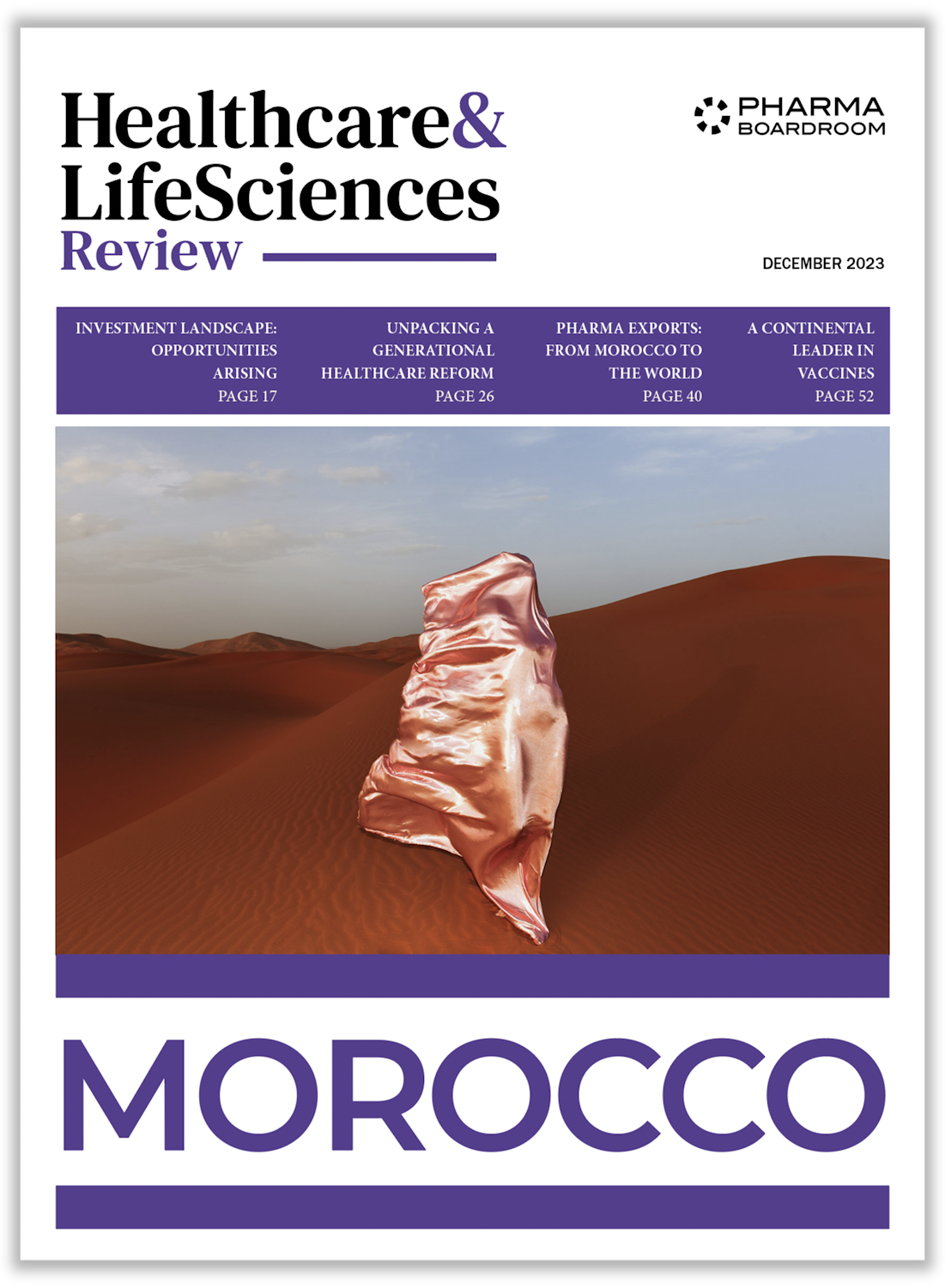VMS Group was founded in 2006 and since then has built close relationships with a handful of large anchor investors, including some of the largest families in Hong Kong. Apart from managing over USD 4.3 billion across its three in-house strategies – Private Equity, Real Estate and Structured Finance, it has also seeded or accelerated other asset managers through strategic partnerships across Venture Capital and Hedge Fund strategies with another USD 6 billion under management (as of 30 November 2023). The healthcare industry is a key focus and investment area for VMS and it has built up its own healthcare ecosystem. Andrew Ng outlines below VMS’s significant and growing investments in the healthcare segment and some of the key healthcare investment trends to watch in the Greater China region.
Can you provide insights into VMS’s investment model and the sectors it operates within?
VMS is a Hong Kong-based asset management firm that specializes in providing investment solutions across various asset classes. Our offerings encompass private equity, structured finance, venture capital, real estate, and hedge fund strategies. While healthcare is a key industry focus for us, we also have investments in technology, real estate, consumer goods, and other sectors. As a firm, we consider ourselves global alternative asset managers, with our current assets under management (AUM) totaling approximately USD 10.3 billion across our entire ecosystem. Within VMS, we have an in-house direct investment team managing around USD 4.3 billion of the total AUM, with additional strategic investments made through our ecosystem fund partners. In my role as the head of healthcare for VMS’s internal team, I oversee our investments and strategies within the healthcare sector.
What has been VMS’s rationale for also focusing on healthcare and what has been your role in building the healthcare investment franchise?
VMS Group was founded in 2006 by our chairman, Benny Chong, who previously worked in private banking and have been maintaining strong relationships with some of the most prestigious local families in Hong Kong. Initially, VMS focused on investments across various asset classes and sectors, including real estate, structured finance etc. However, the firm started to develop more exposure to healthcare portfolios, particularly through co-investments with [foreign partners]/various healthcare specialist partners in 2014. Recognizing the specialized nature of the healthcare industry, VMS decided to establish its own dedicated healthcare investment team. I joined VMS in 2017 with the mandate to build our healthcare investment franchise.
Since then, our healthcare team has made significant progress, investing in over 17 companies in the life science field with a global mandate. While our headquarter is in Hong Kong, our historical investment exposure has been primarily in Greater China and Asia, accounting for around 70 percent of our portfolio. The remaining 20-30 percent comprises investments in companies outside of Greater China, such as those in the US, often with a cross-border angle to leverage opportunities in both markets. This diversified approach allows us to hedge our investments while also providing value to companies seeking to tap into the Asian market.
How was the investment criteria for healthcare chosen and what kind of team was put in place to execute on it?
Building the investment criteria and assembling the team for healthcare investments at VMS was a deliberate process aimed at ensuring comprehensive expertise and capabilities. We recognized that healthcare and biotech investments require a deep understanding of the business, financing needs, regulatory requirements, and scientific knowledge. Therefore, we selected team members with diverse backgrounds and experiences to cover various aspects of the investment process.
Personally, I brought a commercial management consulting background from Big Pharma, along with experience in healthcare M&A from investment banking and research analysis in the secondary market. Other team members were recruited based on their academic backgrounds in biotechnology, experiences in product drug development, and expertise in areas like GMP manufacturing.
We fostered a collaborative culture within the team, where members with different capabilities could contribute their expertise to investment evaluations. Additionally, we established connections with external experts and built an ecosystem of industry partners, including pharma services companies(CXO) to enhance our network and access to the specialized knowledge when needed.
By leveraging both internal expertise and external partnerships, we ensure that our investment decisions are well-informed and that we can provide comprehensive support to portfolio companies throughout their growth journey.
How do you balance investing in service companies versus pure biotech players, and what percentage of your investments fall into each category?
We maintain a balance between investing in service companies and pure biotech players, considering both strategic value and financial return. While around 40 percent of our fund proceeds are allocated to pharma services and CXO companies, the actual number of investments in this category is lower due to the capital-intensive nature of biotech investments.
Our investment decisions are guided by the potential for innovation and cost advantage provided by service companies, ensuring that each investment offers strategic value and the potential for significant financial return.
What qualities do you look for in founders/entrepreneurs when considering investments in biotech startups?
When evaluating founders and entrepreneurs, we prioritize several key qualities. Firstly, we look for individuals with a strong vision and the ability to navigate challenges with resilience and a focus on the long-term success of the company over personal gain. Secondly, we assess their management skills, particularly their ability to lead across multiple disciplines and adapt to various roles within the company, as many returnees may have specialized expertise but need to be versatile in startup environments. Overall, we seek entrepreneurs who demonstrate a combination of vision, adaptability, and a commitment to the success of the venture.
How do you address concerns about the potential drying up of talent pools, especially considering geopolitical tensions between the US and China, understanding the majority of biotech founders today are returnees from the US?
While there may be concerns about talent pools diminishing due to geopolitical tensions and restrictions on movement between countries, we remain optimistic about the long-term prospects for talent acquisition in the biotech industry. We recognize that capital efficiency is a crucial factor for success in biotech, and Asia, including China, offers significant opportunities for achieving this efficiency. Despite geopolitical tensions, we believe that talented individuals with a vision for the future will still be drawn to opportunities in China and Asia, recognizing the importance of being in this region to maximize the potential for success in biotech ventures. Additionally, we continue to actively build our network and ecosystem to attract and retain top talent, ensuring that we have access to the skills and expertise needed for our investment strategies in the years to come.
As an emerging biotech hub, Hong Kong’s unique position as a gateway between East and West can indeed serve as a valuable mediator of trust in the biotech industry. By leveraging its strategic location and well-established financial infrastructure, Hong Kong has the potential to facilitate collaboration and investment between different regions.
How do you perceive the current fundraising environment for biotech companies, particularly coming out of a very negative environment in 2023?
The current fundraising landscape for biotech companies presents significant challenges, influenced by both rising interest rates and the previous hype-driven market. This normalization phase reflects a reevaluation of risk and reward, prompting investors to adopt a more cautious approach. At VMS, we’ve deliberately moderated our investments in healthcare since 2020 due to inflated valuations that don’t align with intrinsic value. While these conditions pose hurdles, they also offer an opportunity to recalibrate the industry. Investors are recognizing the importance of specialist fund managers, and entrepreneurs must adopt realistic expectations regarding funding availability and company valuations. Ultimately, sustainability in fundraising and product development is paramount amidst these evolving market dynamics.
When evaluating companies in healthcare and life sciences the US market is obviously number one, but how should the Chinese market be considered?
I had foreseen, even back when I was an analyst before joining this firm, that China’s healthcare sector would surpass its peers through innovation. My belief was rooted in the utilization of Asia’s infrastructure, offering low costs and rapid development, coupled with access to a vast patient base. Additionally, China’s domestic market serves as a solid foundation, ensuring a return on investment. While pricing pressure may not have been evident in 2015, it was foreseeable. The aging population issue in China, with an estimated 28 percent of the population aged over 60 by 2040, coupled with the growth of reimbursement and medical insurance accounts, highlights the need for quality healthcare at an affordable price. Our prediction was that Chinese biotech companies could leverage these advantages to profit domestically while exporting assets to markets like the US and Europe for superior returns. The realization of this potential has become more apparent in recent years, particularly as capital markets tighten, forcing entrepreneurs to reconsider their funding strategies. Consequently, there’s been a notable shift towards licensing assets to international partners as a means of securing funding.
In navigating the complex landscape of the Chinese biotech market, how do you advise entrepreneurs to prioritize their battles amidst potential distractions and challenges?
The Chinese biotech market presents a unique set of challenges and opportunities. Unlike the more mature US market where commercialization strategies are well-defined, China’s biotech scene is still evolving, with many entrepreneurs striving to build their own pharmaceutical companies. However, given the current funding environment and market maturity, there’s a growing realization among biotechs that partnering and alliances may offer a more feasible path to success. By focusing on developing exceptional products and leveraging strategic partnerships with vendors and CXOs, entrepreneurs can optimize their resources and navigate the intricacies of the Chinese market more effectively.
Given the recent challenges faced by biotech companies listed on Chapter 18A of the Hong Kong Stock Exchange, what can we expect looking forward?
The current downturn cycle experienced by biotech companies listed on Chapter 18A of the Hong Kong Stock Exchange is indeed a notable shift from previous trends. While it may appear as a lack of interest, it’s crucial to recognize that this is the first real downturn cycle in the region. Building a robust biotech community takes time, especially in attracting specialized investors who understand the nuances of the industry. In the long term, I remain optimistic that Chapter 18A will serve as a successful platform for Asia-based biotechs to raise capital. However, to address the current challenges, regulatory changes could be explored. For instance, allowing onshore investors in mainland China to access Chapter 18A companies, regardless of market cap restrictions, could enhance liquidity and investor participation. By fostering greater engagement and understanding among investors, we can create a more resilient and dynamic biotech ecosystem in Hong Kong.
Are there any other key trends you would like to highlight?
I believe there’s an aspect worth mentioning, particularly regarding the potential for private credit to flourish in the current economic landscape. I anticipate a notable upswing in this sector, given the prevailing conditions. Furthermore, our firm has been diligently refining our internal business strategies to develop products that effectively cater to the needs of both our LPs and discerning entrepreneurs. I’m confident that our efforts in identifying and leveraging the synergies between these stakeholders will yield highly appealing investment opportunities.







